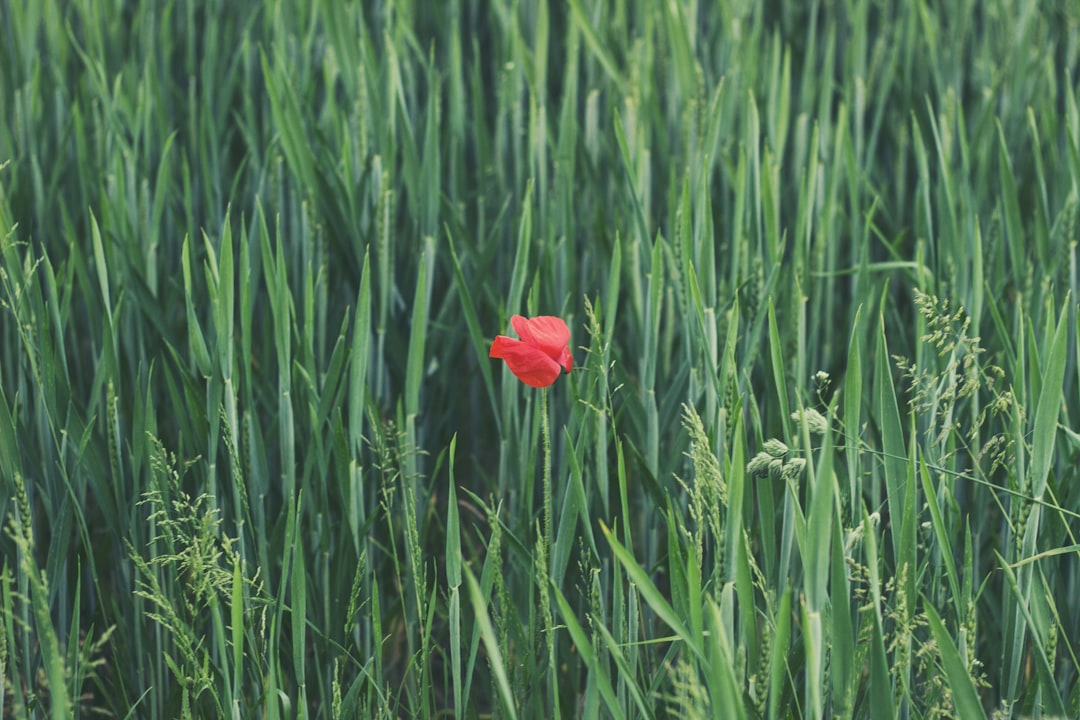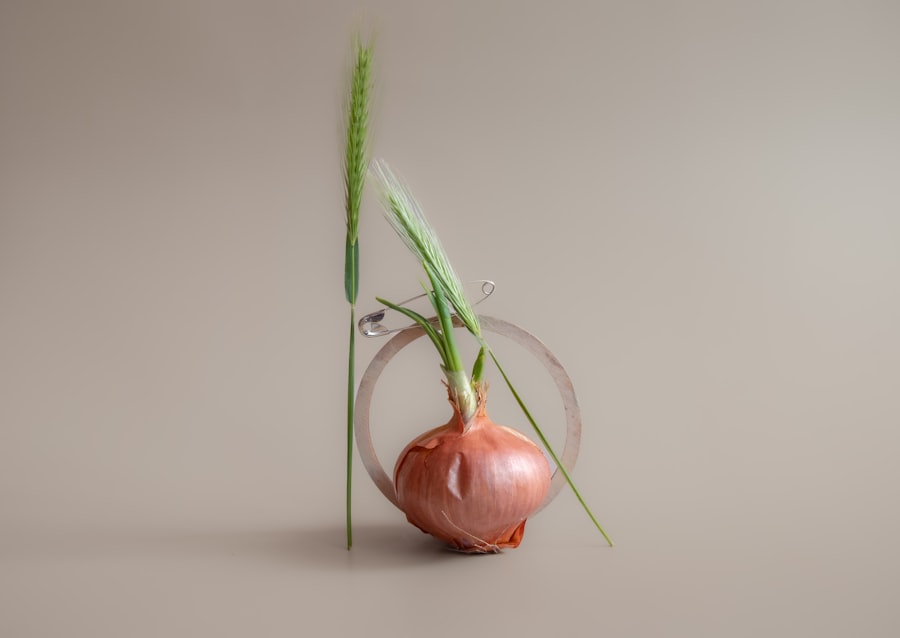Planting Onions: Optimal Spacing Tips

Onions are a versatile and essential vegetable that can be grown in your own garden. They are easy to grow and provide a delicious addition to many dishes. Planting onions in your garden not only ensures a fresh supply of this flavorful vegetable but also offers numerous benefits.
When it comes to planting onions, it is important to understand the basics. Onions are typically grown from sets, which are small bulbs, or from seeds. They prefer well-drained soil and full sun, making them an ideal addition to any garden. Onions can be planted in rows or raised beds, depending on your preference and available space.
Key Takeaways
- Optimal spacing is crucial for successful onion planting
- Choosing the right onion variety for your garden is important
- Soil preparation is key to ensuring healthy onion growth
- Basic tools and equipment are needed for planting onions
- Following a step-by-step guide can help ensure proper planting technique
Understanding the importance of optimal spacing
Spacing is a crucial factor when it comes to onion growth. Onions need enough space to develop their bulbs properly. If they are overcrowded, they will not have enough room to grow and may produce smaller bulbs. On the other hand, if they are undercrowded, they may not receive enough nutrients and sunlight, resulting in stunted growth.
Overcrowding can also lead to increased competition for resources such as water and nutrients, which can negatively impact the overall health and yield of the onions. Additionally, overcrowded onions are more prone to diseases and pests due to poor air circulation.
Choosing the right onion variety for your garden
When selecting onion varieties for your garden, there are several factors to consider. First, consider the climate in your area. Some onion varieties are better suited for cooler climates, while others thrive in warmer regions.
Another factor to consider is the size of the onion bulb you prefer. Some varieties produce smaller bulbs, while others yield larger ones. Additionally, consider the flavor profile of the onion variety you choose. Some varieties have a milder taste, while others are more pungent.
Popular onion varieties for home gardens include ‘Yellow Sweet Spanish’, ‘Red Burgundy’, ‘Walla Walla’, and ‘Texas 1015Y’. These varieties are known for their excellent flavor and adaptability to different growing conditions.
Soil preparation for onion planting
| Soil Preparation for Onion Planting | Metric | Value |
|---|---|---|
| Soil Testing | pH Level | 6.0-7.0 |
| Organic Matter | 2-3% | |
| Nutrient Levels | Optimal | |
| Tillage | Depth | 6-8 inches |
| Timing | 2-3 weeks before planting | |
| Fertilization | Type | 10-10-10 or 12-12-12 |
| Application Rate | 1-2 pounds per 100 square feet | |
| Mulching | Type | Organic (straw, hay, leaves) |
| Thickness | 2-3 inches |
Proper soil preparation is essential for successful onion planting. Start by clearing the area of any weeds or debris. Onions prefer loose, well-drained soil, so it is important to ensure that the soil is not compacted.
Next, test the soil pH. Onions prefer a slightly acidic soil with a pH between 6.0 and 7.0. If the pH is too high or too low, you can amend the soil with lime or sulfur to adjust the pH accordingly.
In addition to pH, onions also require adequate nutrients for healthy growth. Before planting, incorporate organic matter such as compost or well-rotted manure into the soil to improve its fertility. Onions are heavy feeders, so it is important to provide them with a balanced fertilizer throughout the growing season.
Tools and equipment needed for planting onions
To plant onions, you will need a few essential tools and equipment. These include a garden fork or tiller for loosening the soil, a rake for leveling the soil, a hoe for removing weeds, and a trowel or dibber for making holes for planting.
It is important to keep your tools clean and well-maintained to ensure their longevity and effectiveness. After each use, remove any dirt or debris from your tools and wipe them dry to prevent rusting. Sharpen blades regularly to ensure clean cuts and replace any worn-out or damaged tools.
Step-by-step guide to planting onions

1. Prepare the soil by loosening it with a garden fork or tiller.
2. Level the soil with a rake to create a smooth surface.
3. Make furrows or raised beds for planting onions.
4. If using sets, plant them about 1 inch deep and 4-6 inches apart. If using seeds, sow them about 1/4 inch deep and thin them to the desired spacing once they germinate.
5. Water the onions thoroughly after planting to settle the soil.
6. Mulch the area around the onions to conserve moisture and suppress weeds.
7. Water the onions regularly, ensuring that the soil remains consistently moist but not waterlogged.
8. Fertilize the onions every 4-6 weeks with a balanced fertilizer.
9. Monitor for pests and diseases and take appropriate action if necessary.
10. Harvest the onions when the tops start to yellow and fall over. Gently lift them from the soil and allow them to dry in a well-ventilated area before storing.
Tips for maintaining optimal spacing during the growing season
Maintaining optimal spacing is crucial for the health and yield of your onions. As they grow, onions may need to be thinned to ensure adequate space between plants. Thinning involves removing excess seedlings or sets to achieve the desired spacing.
To thin onions, gently pull out the smaller or weaker plants, leaving only the strongest ones. This will allow the remaining onions to grow larger and develop better bulbs.
In addition to thinning, it is important to regularly weed your onion bed and mulch around the plants. Weeds compete with onions for resources such as water, nutrients, and sunlight, so it is important to keep them under control.
Mulching helps suppress weeds and conserve moisture in the soil, reducing the need for frequent watering. Organic mulches such as straw or shredded leaves work well for onions.
Common mistakes to avoid when planting onions
When planting onions, there are several common mistakes that gardeners often make. One of these is planting onions too deep. Onions should be planted with their tops just above the soil surface. Planting them too deep can inhibit their growth and result in smaller bulbs.
Another common mistake is not providing enough water. Onions require consistent moisture throughout the growing season. If they do not receive enough water, their growth may be stunted, and their bulbs may not develop properly.
Over-fertilizing is another mistake to avoid. While onions require regular fertilization, excessive amounts of fertilizer can lead to excessive leaf growth at the expense of bulb development. Follow the recommended dosage on the fertilizer package and monitor the plants for any signs of nutrient deficiencies or excesses.
Harvesting and storing onions
Knowing when to harvest onions is crucial for optimal flavor and storage life. Onions are ready to harvest when their tops start to yellow and fall over. This indicates that the bulbs have reached maturity.
To harvest onions, gently lift them from the soil using a garden fork or trowel. Avoid pulling them by the tops, as this can damage the bulbs. Once harvested, allow the onions to dry in a well-ventilated area for a few weeks until the tops are completely dry and papery.
After drying, trim off the tops to about 1 inch above the bulb and remove any loose dirt or debris. Store the onions in a cool, dry place with good air circulation. They can be stored in mesh bags or crates, or braided together and hung in a cool pantry or cellar.
Conclusion and final thoughts on planting onions with optimal spacing
Planting onions with optimal spacing is essential for their growth and yield. By providing enough space between plants, you can ensure that your onions develop healthy bulbs and reach their full potential.
In addition to proper spacing, it is important to choose the right onion variety for your garden, prepare the soil adequately, and maintain optimal conditions throughout the growing season. By following these guidelines and avoiding common mistakes, you can enjoy a bountiful harvest of delicious homegrown onions.
So why not give onion planting a try in your garden? With a little bit of planning and care, you can enjoy the satisfaction of growing your own onions and adding a fresh, flavorful ingredient to your meals. Happy planting!
If you’re looking for guidance on how far apart to plant onions, you might find this article from Lawn World helpful. It provides detailed information on the ideal spacing for onion plants, ensuring optimal growth and yield. Check out the article here for expert tips and advice.
FAQs
What is the recommended distance for planting onions?
The recommended distance for planting onions is 4-5 inches apart.
Why is it important to plant onions at the right distance?
Planting onions at the right distance ensures that they have enough space to grow and develop properly. It also helps to prevent overcrowding, which can lead to disease and poor yields.
Can onions be planted closer together?
Onions can be planted closer together, but this can lead to smaller bulbs and lower yields. It is generally recommended to stick to the recommended distance of 4-5 inches apart.
What is the best time to plant onions?
Onions are typically planted in the early spring or fall, depending on the variety and location. In general, onions prefer cooler temperatures and can be planted as soon as the soil can be worked in the spring.
What type of soil is best for planting onions?
Onions prefer well-drained soil that is rich in organic matter. A pH level of 6.0-7.0 is ideal for onion growth.
How deep should onions be planted?
Onions should be planted about 1 inch deep, with the pointed end facing up. Planting too deep can lead to poor growth and smaller bulbs.



